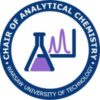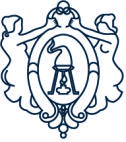Prof. Marceli Struszyński was an outstanding analyst chemist, the first professor of analytical chemistry in Poland. He was born on 16 January 1880 in Vinnitsa, Podolia. After graduating in 1903 from the Kharkiv Institute of Technology as a chemical and technological engineer, he started his professional career in Moscow. During the Moscow period, he maintained regular contacts with the Polish colony. At that time he established scientific cooperation and became friends with Prof. Wojciech Świętosławski. At the end of 1918 he took up a job at the Institute of Fermentation Industry in Warsaw. In 1919 he became an adjunct professor in the Chair of Organic Technology at the Faculty of Chemistry of the Warsaw University of Technology. From 1922 he lectured on the basics of chemical analysis and ran an analytical laboratory. In the years 1928-1933 he managed the laboratories of the Spirits and Tobacco Monopolies, and in the years 1933-1938 he was the head of the analytical department of the Military Gas Institute in Warsaw. In 1938 Professor Marceli Struszyński was appointed associate professor and head of the Chair of Technical Analysis and Commodity Studies at the Faculty of Chemistry of the Warsaw University of Technology. It was the crowning achievement of his efforts to recognize analytical chemistry in Poland as an independent department of chemistry, important for the education of chemistry students. During the Nazi occupation, he taught analytical chemistry at the University of Technology and took part in clandestine teaching at the academic level. By performing the analyses of various materials, including explosives, he helped to decipher the secrets of German rocket weapons by determining that one of the components of the weapon’s fuel was a high percentage (80%) hydrogen peroxide solution.
In 1945, Professor Marceli Struszyński returned to Warsaw and took over the leadership of the Analytical Department of the Institute of Industrial Chemistry. In 1946, he resumed his teaching and scientific work as the head of the Chair of Technical Analysis and Commodity Studies at the rebuilding Warsaw University of Technology. He managed these two scientific institutions until his death. He became a full professor in 1948. Under the direction of Prof. Marceli Struszyński and Assistant Professor Jerzy Minczewski, a six-volume collective work entitled “Kontrola analityczna w przemyśle chemicznym” [Analytical control in the chemical industry] was published in 1954-1958. The 1950s brought rapid development of instrumental methods of analysis. Prof. Marceli Struszyński, appreciating their role and importance in modern analytical chemistry, encouraged his collaborators to master and apply new techniques (spectrophotometry in visible light and ultraviolet, emission spectrometry and electrochemical and chromatographic techniques). He has shared his knowledge of chemical analysis in his textbooks: “Analiza techniczna” [Technical analysis] (1930), “Analiza jakościowa nieorganiczna i organiczna z uwzględnieniem towaroznawstwa” [Qualitative inorganic and organic analysis including commodity science] (1935), three-volume “Analiza ilościowa i techniczna” [Quantitative and technical analysis] (1947-1950 and 1954-1957), “Jakościowa analiza nieorganiczna” [Qualitative inorganic analysis] (1960) and “Jakościowa analiza organiczna” [Qualitative organic analysis] (1960). In 1951 he received a state award for his scientific activity. He was awarded the Officer’s Cross of the Order of Polonia Restituta (1955) and the Order of the Banner of Work (1957).
He died on 1 September 1959 in Warsaw and is buried in the Bródno Cemetery.

